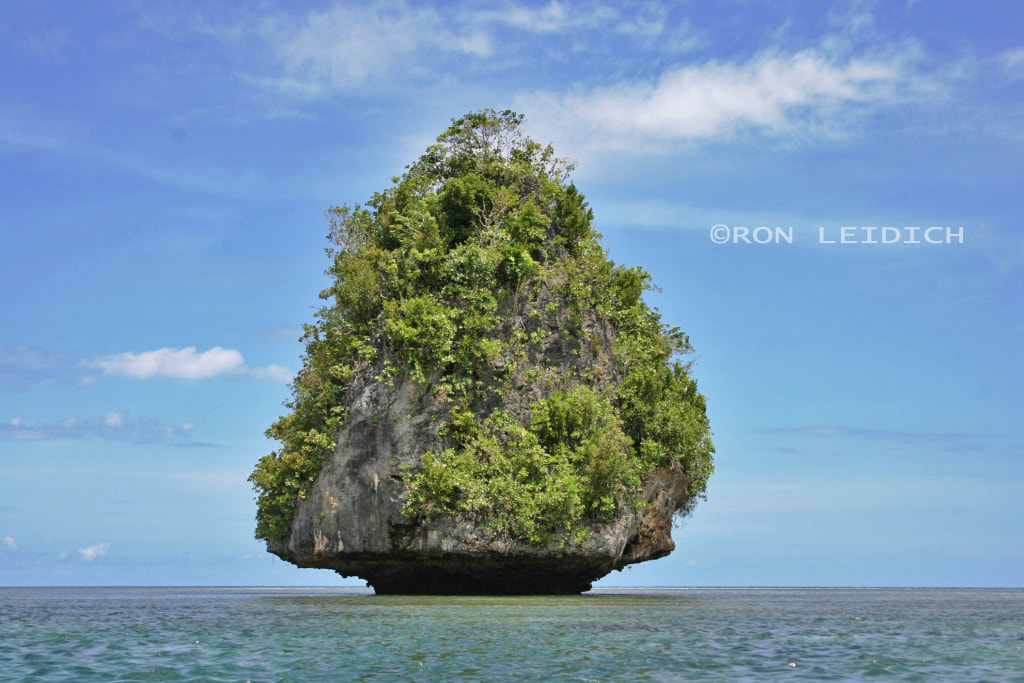|
Palau was indeed an island born of fire. Sitting precariously on the edge of the Philippine tectonic plate, Palau’s first birth ceremony began when the massive Pacific Plate slipped beneath the smaller Philippine plate. The result was a massive volcanic eruption which formed a 100 mile long volcanic ridge. Free floating coral larvae then settled onto this inviting oceanic substrate and began to build a new reef. After millions of years of deposition the tiny coral brick layers had formed a massive limestone “icing” on top of the sinking volcanic “cake.”
A subsequent subduction episode (about 35 million years ago) from the Pacific plate, thrust this Philippine plate layer cake above the sea surface and thus exposed millions of years of reef deposition. Today’s world famous “Rock Islands” are the heavily eroded remnant of a once vast exposed limestone reef. The islands of Babeldaob and Koror are all that remains of the still subsiding volcano. |
|
Since the Oligocene Epoch, Palau’s limestone plate has been exposed to torrential rains, pounding surf, tidal action, and even the scraping radulas of intertidal invertebrates. The rain water has chemically eroded the limestone into massive caverns adorned with delicate crystal formations. Heavy surf and licking Chitons have chewed away at the intertidal zone forming deep undercuts and ultimately the graceful mushroom-shaped islets. Most impressively, rising and falling tides have penetrated the 70+ salt water lakes forming larger and larger pours and ultimately leading into giant siphon tunnels! Some of the tunnels are over 400 feet long and can even by accessed by kayaks at precise tidal times.
Erosion continues to wear away at Palau’s islands. Ravenous parrotfish chew daily on coral reef producing up to one ton of beach sand per parrotfish per year! Collapsing limestone continues to form Natural Archways and spiraling vertical cliffs. The evidence of Palau’s geologic past is literally written on the rocks. Even the past glacial episodes have left their scars. SCUBA divers today flock to the famous Blue Holes once formed by dripping fresh water when sea levels were an astonishing 300 feet lower than today. Palau’s natural limestone playground is also a fascinating classroom filled relics from her geologic history. |














